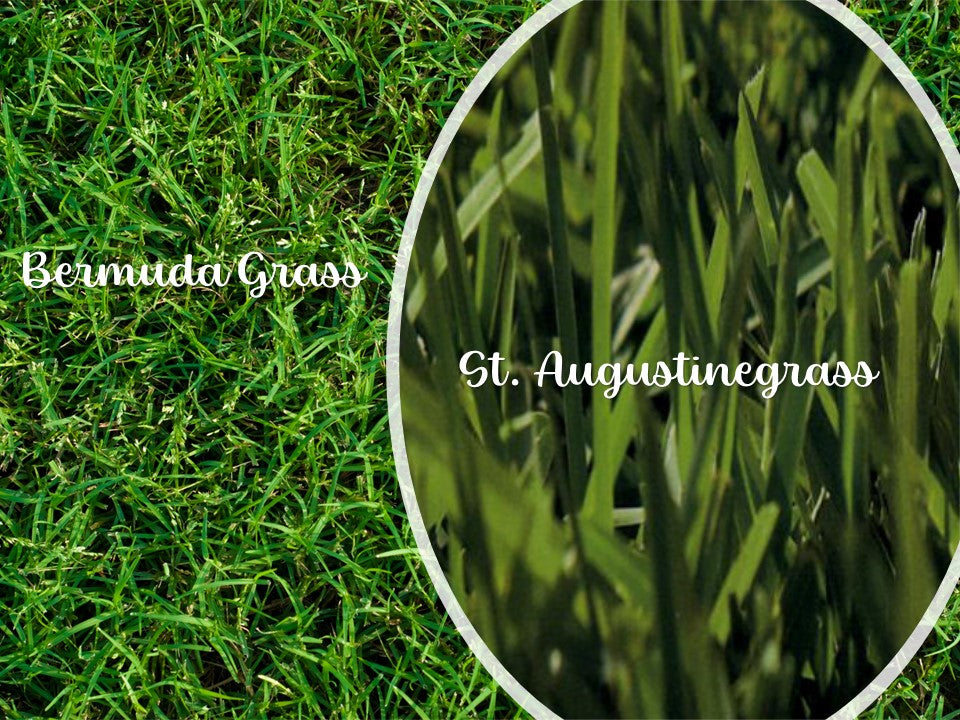This can be very confusing because they are all green, right?
Let's talk about the most common grass in the Texas area: St. Augustinegrass. It produces a beautiful, full carpet of grass when maintained properly. It’s hardy in the spring, summer, and fall, and goes dormant in the winter to ensure the root system will stay healthy when the growing season begins in the spring. This grass does well in our area because we do not have harsh winters.
St. Augustinegrass tolerates shade well but does thrive better with sunlight, ideally 4-6 hours of direct sunlight per day. While it's known for having some shade-tolerance, it still needs sunlight to grow and stay healthy. In areas with limited sunlight, it may struggle or become thin. This grass requires regular mowing to keep a height of 2 1/2 to 3 inches, and watered regularly if sufficient rainfall is not received. Once established, it can tolerate drought conditions with proper watering.
The drawbacks of St. Augustinegrass is the susceptibility to pests such as chinch bugs, sod webworms, army worms, or grub worms, and fungus' such as brown patch or leaf spot. These can be controlled by having your landscape professionally treated. Some homeowners treat for these issues themselves, however, misdiagnoses can happen and the pest/disease is actually not being treated properly and can devastate your lawn.

The second most common grass here in Houston is Bermuda grass. Have you ever visited a golf course or other commercial property that has a low growing, very soft grass? Chances are you are standing on Bermuda Grass.
Many new subdivisions in the greater Houston area are electing to install Bermuda Grass and require that the homeowner continues with these Bermuda lawns. Bermuda grass has both advantages and disadvantages for homeowners. It's known for its durability, ability to withstand heavy traffic, and quick recovery from damage. However, it requires high maintenance, can be invasive, and is not well-suited for shaded areas.
Bermuda grass requires frequent mowing, fertilization, and weed control to maintain its appearance. It's fast growth rate and ability to spread through runners and rhizomes can make it difficult to contain, potentially encroaching on garden beds or neighbor's lawns.
To mow a Bermuda grass lawn effectively, you should maintain a mowing height between 2 and 2 1/2 inches, depending on the specific variety and your desired look. The "one-third rule" of mowing should be followed, meaning you should never remove more than one-third of the leaf tissue at a time. This generally means mowing more frequently during the growing season, perhaps weekly, or even more often if needed to prevent scalping.





